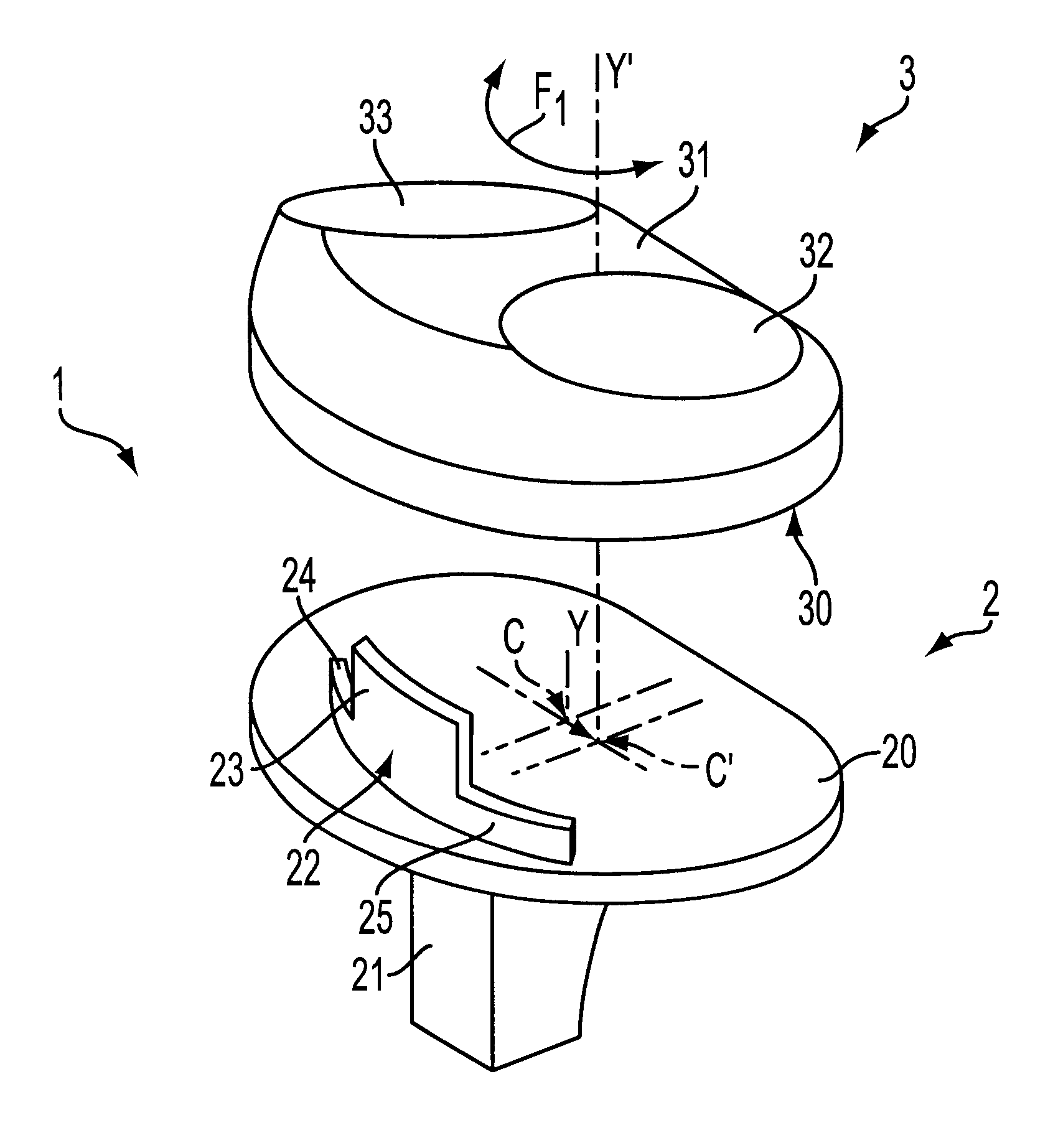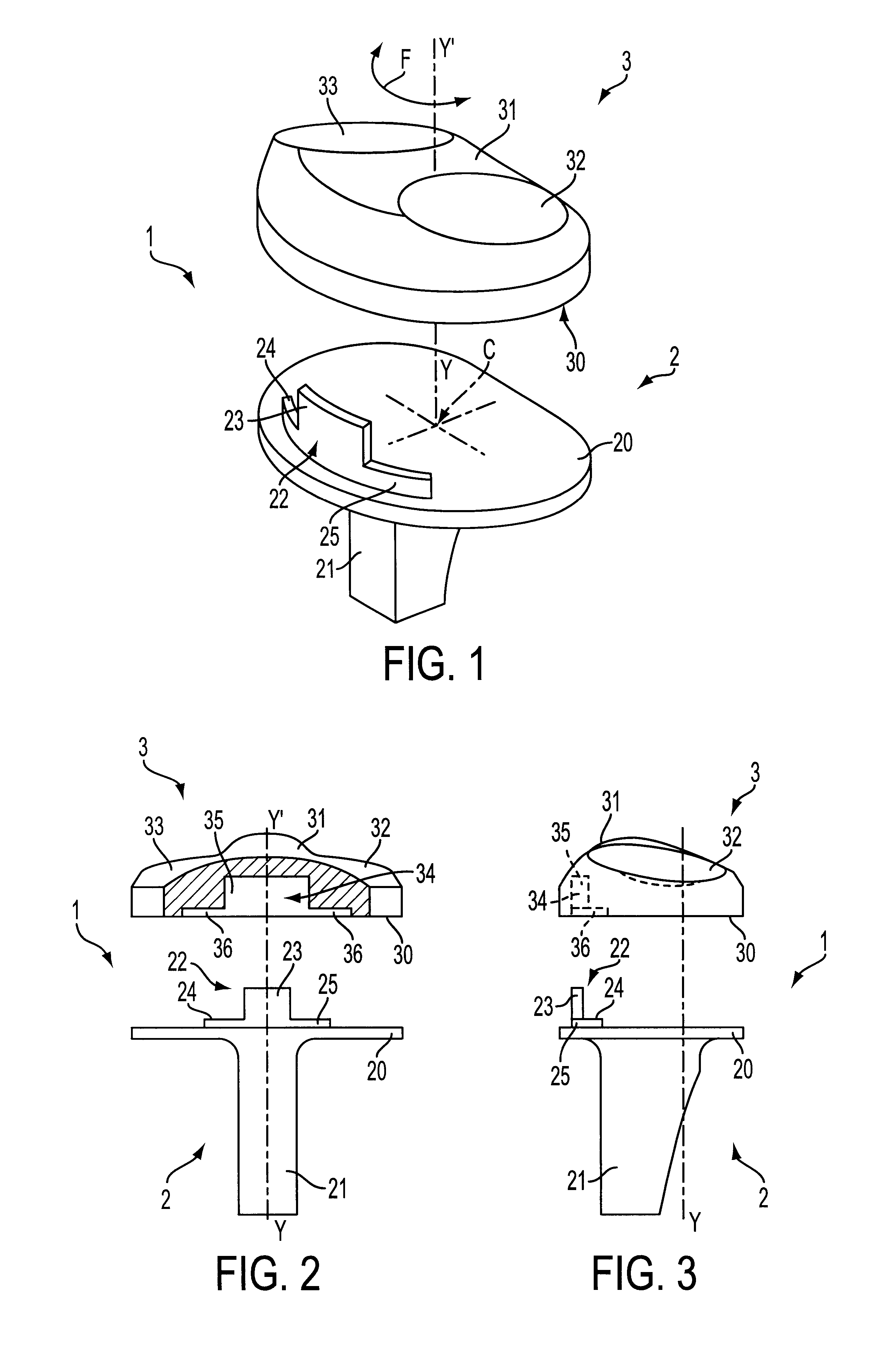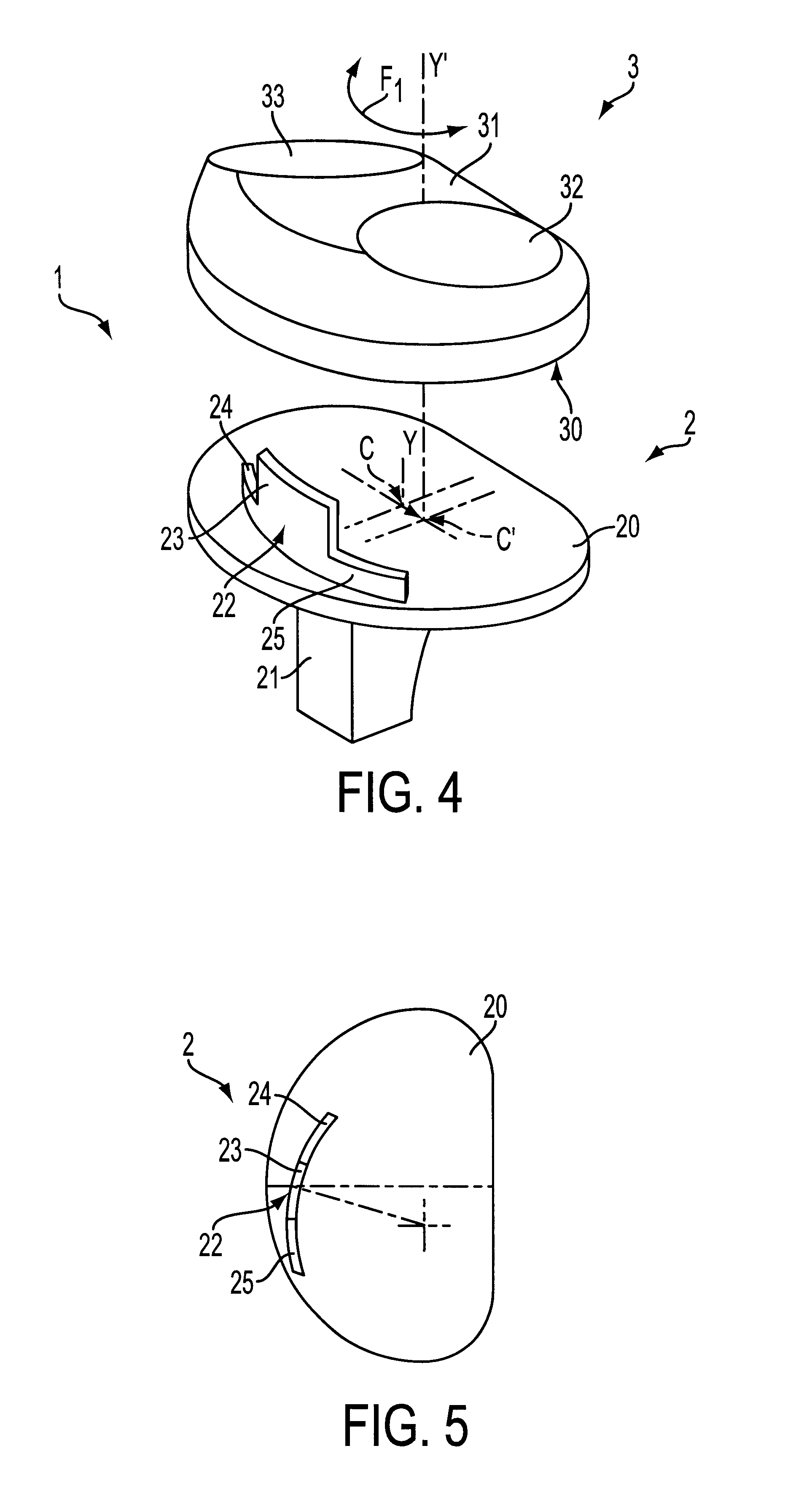Knee prosthesis with a rotational plate
a rotational plate and prosthesis technology, applied in the field of knee prosthesis, can solve the problems of exacerbated drawbacks, difficulty in inserting the plastic tibia plate, and the type of prosthesis has the drawback of not physically embodying an axis of rotation
- Summary
- Abstract
- Description
- Claims
- Application Information
AI Technical Summary
Benefits of technology
Problems solved by technology
Method used
Image
Examples
Embodiment Construction
FIGS. 1 to 3 show a knee prosthesis 1 comprising a metal base 2 and a tibia plate 3, whereas the femoral element is not depicted.
The metal base 2 consists of a horizontal disk 20 secured on one of its faces to an anchoring rod 21 allowing the base 2 to be fixed into the tibia of a patient.
The horizontal disk 20 comprises, on the opposite side to the rod 21, a guide mechanism which utilizes an upstand 22 with an exterior profile in the shape of an arc of a circle. In this case, note that the center of rotation C of the upstand 22 is borne by the tibia bone vertical axis YY'.
The upstand 22 extending vertically above the horizontal disk 20 has a central part 23 integral on each side with two vertical edges 24 and 25 which are not as tall as the central part 23.
In addition, the upstand 22 is positioned on the horizontal disk 20 of the metal base 2 a certain distance away from the center of rotation C.
The tibia plate 3, which is made of plastic, has a flat lower face 30 arranged in a hor...
PUM
 Login to View More
Login to View More Abstract
Description
Claims
Application Information
 Login to View More
Login to View More - R&D
- Intellectual Property
- Life Sciences
- Materials
- Tech Scout
- Unparalleled Data Quality
- Higher Quality Content
- 60% Fewer Hallucinations
Browse by: Latest US Patents, China's latest patents, Technical Efficacy Thesaurus, Application Domain, Technology Topic, Popular Technical Reports.
© 2025 PatSnap. All rights reserved.Legal|Privacy policy|Modern Slavery Act Transparency Statement|Sitemap|About US| Contact US: help@patsnap.com



